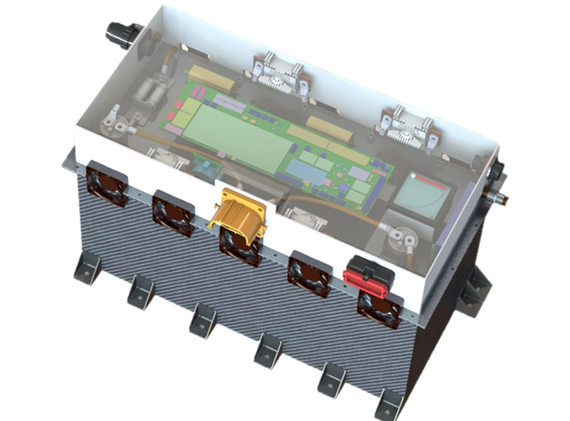About Me:
I am a Ph.D. candidate in the Mechanical Engineering Department at Texas A&M University. My current work revolves around perception, motion planning, and controls for autonomous vehicles. I received my bachelor's degree from the Indian Institute of Technology, Bombay (IIT Bombay).
I have previously worked as a Research Associate at IIIT Hyderabad on trajectory planning and controls on an autonomous car. During my B.Tech at IIT Bombay, I was also an integral part of a Formula Student team and led the electronics division to design and build an electric race car to participate in Formula Student Competition held at Silverstone Circuit, UK. After my bachelor's degree, I joined a startup team called Vazirani Automotive to develop a high-performance hybrid-electric powertrain.
Trajectory Proposal Network
Vehicle Tracking with Radar and Thermal Camera

IIT Bombay Racing
Projects
AUTONOMOUS SYSTEMS LABORATORY, Texas A&M University
Research Guide: Dr. Shivakumar Rathinum
Assisted Path Planning in an Impeded Environment
We have developed a Multi-Agent Path Planning algorithm with asynchronous motion for applications such as emergency vehicle escort missions, autonomous warehouse operations, and any other application where an assisting agent can be used to improve the efficiency of the primary one. An example here shows an emergency vehicle (ambulance, fire truck) trying to reach the destination. While going through the traffic, the vehicle may have to slow down. But with the assistance of a drone, that can warn the traffic in advance, the vehicle can reach the destination faster.
We have generalized the permanent labeling algorithm for multiple agents to optimally solve the NP-hard Assisted Shortest Path Planning (ASPP) problem. The algorithm was further improved by including search filters based on the A* algorithm. Currently, we are working on a Monte Carlo Tree Search (MCTS) based anytime algorithm for the ASPP to generate good feasible solutions within any given time limit.
Paper: https://ieeexplore.ieee.org/abstract/document/10230292
Vehicle Detection and Tracking Using Thermal Cameras in Adverse Visibility Conditions
Perception is a particularly challenging problem in adverse weather conditions such as sudden changes in lighting, smoke, fog, snow, and rain. In this work, we demonstrate that the addition of LongWave Infrared (LWIR)/thermal cameras to the sensor stack on a self-driving vehicle can address some of the challenges in adverse visibility conditions.
We trained a machine learning-based image detector on thermal image data and used it for vehicle detection. For vehicle tracking, Joint-Probabilistic Data Association (JPDA) and Multiple Hypothesis Tracking (MHT) approaches were explored where the thermal camera information was fused with a front-facing radar.
Robotics Research Center, IIIT Hyderabad
Research Guide: Prof. Madhava Krishna
Fast, Diverse Trajectory Proposals for Autonomous Navigation
I worked on diverse trajectory proposals for autonomous vehicles. In this, I designed a novel architecture that gives multiple diverse trajectories given an occupancy map and past trajectory as input to the network.
It contains a two-stage architecture called Trajectory Proposal Network and Trajectory Sampler Network. We show results on KITTI dataset and the trajectories are executed autonomously in an electric car. The research work is published in Intelligent Vehicle Symposium 2019.
Paper: https://ieeexplore.ieee.org/abstract/document/8813986
Patent: https://patents.google.com/patent/US20200387163A1/en
Static Obstacle Avoidance by Drive-By-Wire Electric Car
In the first phase of this project, developed a drive-by-wire setup on Mahindra e2o vehicle in which a closed-loop feedback controller is used to actuate break, throttle and steering. Then in second phase achieved static obstacle detection by generating an occupancy map from Velodyne Lidar data. By using Dynamic Window Approach for generating path with RTK-GPS and IMU for localization, navigated the car till the goal point.
IIT Bombay Racing
IIT Bombay Racing is a cross-functional team of 70 students which design, fabricate and assemble a formula style racing car to compete in prestigious Formula Student annual competition at Silverstone Circuit, UK
EVo X
During my final year in IIT Bombay, 2016-17, as Chief Electronics Officer, I led the electronics team in design and development of EVoX. I oversaw multiple subsystems including battery design and cooling and battery management system (BMS). To improve the reliability of electronics components in the car, I introduced the concept of module-based design of the electronic circuitry to simplify and assist troubleshooting. This saved the team several hours while testing components and made diagnosing problems much easier.

In my third year, I designed closed-loop feedback controller to achieve Electronic Differential for our rear wheel drive car with two independent motors. I also developed the CAN bus communication for reliable sensor data communication across the car.
From closed-loop sensor data, developed an ARAM model of the car which was used to fine tune the car and referred to design Vehicle Dynamics next season.
IIT Bombay Racing at Silverstone Circuit
Vazirani Automotive
A startup team with an aim to build India's First Hypercar
As project engineer, I worked on development of electric powertrain of this project with more than 600kW of peak power. I played major role in design and development of it's battery pack and cooling technology.
The car is launched at Geneva Auto Show in July 2018.






